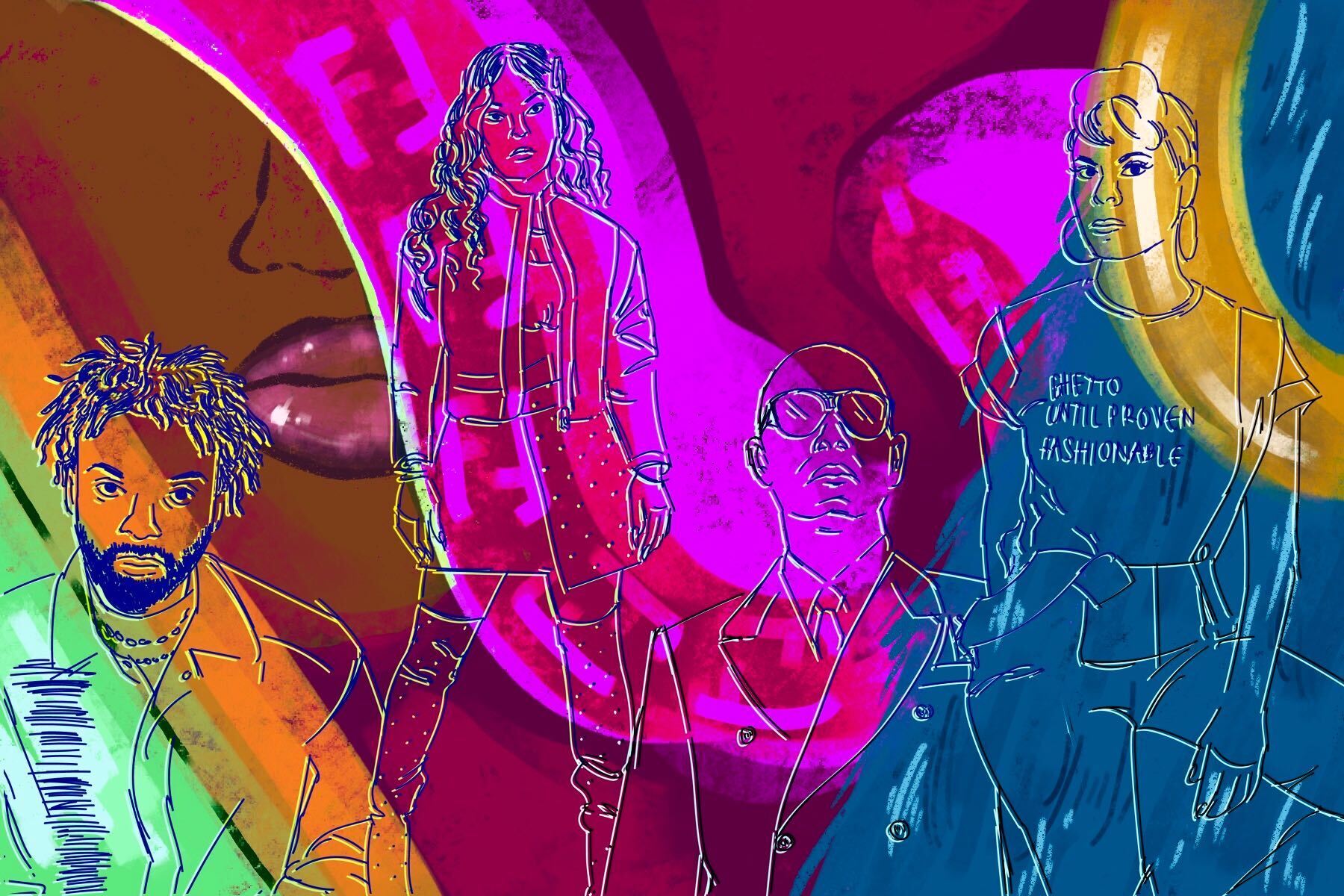In the late ’90s, fashion was immersed in oversized layers of clothing, monochromatic color schemes and a subversion of luxury brands and sportswear. While these aesthetics have become staples of 90’s fashion, their primary position within the culture of hip-hop is oftentimes ignored by mainstream media, as the process of the globalization of hip-hop ignores and appropriates all aspects of the art form. Netflix’s “The Remix: Hip Hop X Fashion” challenges this by profiling the prominent stylists and designers that brought the genre on to the global stage.
As the term remix is mainly associated with music, “The Remix: Hip Hop X Fashion” begins by examining the origins of remixing and its relationship to being socially othered. The film explores the ways in which systemic racism, which began with slavery, caused Black people to create their own modalities of creative expression. Enslaved people had to wear clothing discarded by white slave owners, something that the film noted was a form of remixing that ultimately gives imagination the power of survival.
The true art of fashion is not always collectively understood. Yet, fashion stylists set the tone for the future of fashion for the general public, pioneering trends to explore through musicians and actors. This realization has recently caused a shift in language, with some now referring to stylists as “image architects.” The term was coined by Law Roach, who is the creative brain behind transforming the looks of many celebrities, ranging from Celine Dion to Zendaya. However, without the image architects of ’90s hip-hop, the world of fashion would be much different.
“The Remix: Hip Hop X Fashion” features stylist Misa Hylton as one image architect who is responsible for introducing what would become the quintessential elements of the culture of ’90s hip-hop. Described as one of the most influential people in the hip-hop industry, Hylton built a monochromatic world filled with denim, fur and brightly colored wigs. The video for Lil Kim’s “Crush On You” was inspired by “The Wiz,” featuring bright monochromatic outfits and matching wigs; according to Hylton, this was considered a fashion risk at the time. Ultimately, this signaled the beginning of Hylton’s unforgettable, technicolored outfits. Later described as “the most iconic VMA look,” Lil Kim’s lilac, sequined suit was also designed by Hylton. The outfit, complete with a matching pastie and purple wig, has since become a symbol of ’90s pop culture.
The strained portrayal of femininity rests at the crux of the hip-hop industry during the ’90s; Hylton challenged these notions by making the space completely her own when she styled Mary J. Blige and Lil Kim. A segment in the film demonstrates this by revealing that Mary J. Blige gravitated toward baggier clothing, stating “I was always dressed like a guy ‘cause I wanted to, ‘cause it made me comfortable in the industry.” Hylton’s work with Lil Kim on the other hand, was driven by Lil Kim’s comfort with her sexuality, allowing for Hylton to create the unforgettable looks worn by the artist, such as the VMA’s suit.
“The Remix: Hip Hop x Fashion” shows the reality of being a woman in hip-hop, particularly the way in which misogyny prevents recognition, ultimately pushing women to work behind the scenes. In fact, April Walker, the founder of Walker Wear, purposely didn’t put herself at the forefront of the line. Walker Wear became one of the most prominent brands in hip-hop fashion, and was worn by artists such as Aaliyah, Snoop Dogg and Tupac. Yet, her experience as a woman of color in the industry led her to retiring “Walker Wear” in 1997. However, Walker has since relaunched the line to tell and celebrate the history of hip-hop and its fashion. “We create culture but don’t participate in the longevity of it, in terms of the business part of it,” Walker stated in the film.
The ’90s were shaped by the ascent of globalization, resulting in a shift in the way media was consumed. Following the creation of MTV in the ’80s, the production and cultural significance of music videos was heightened. Fashion began to travel through music videos, spreading hip-hop fashion on a global scale. Prior to this era, mainstream fashion brands tended to either ignore or reject hip-hop fashion lines. Once the lucrative possibilities of the genre were further exemplified through the success of hip-hop artists, hip-hop fashion became part of the mainstream fashion industry. However, as elements of hip-hop become more widely associated with high fashion, the styles continue to be further appropriated by the suburban white kid aesthetic.
This is where it becomes essential to truly understand the history of hip-hop and its aesthetics, the concept that is at the core of “The Remix: Hip Hop X Fashion.” The film examines the trends that encompassed ’90s hip-hop, while managing to critically approach the historical contexts of adopting them as trends. The film features the work of Dapper Dan, a designer who created his own designs using fabric from luxury brands, such as Gucci and Louis Vuitton. Dapper Dan’s use of luxury brands within his designs became another intrinsic aspect of the culture of hip-hop, using the symbolic nature of these brands to establish an aura of success.
Dapper Dan’s fashion house ultimately had to shut down due to copyright infringement, yet, years later, Gucci’s “2018 Resort” collection featured a jacket with puffed sleeves nearly identical to a piece Dapper Dan had designed in the late ’80s. This exemplifies the aspect of appropriation that the film explores, particularly aiming to initiate conversations regarding the power of social media to demand accountability. After receiving a large amount of backlash over copying Dapper Dan’s design, Gucci and Dapper Dan launched a collection together in the summer of 2018.
As social media continues to increase the speed that fashion trends spread throughout the world, it will always be crucial to engage with the history and cultural implications of these trends. “The Remix: Hip Hop X Fashion” does just that, illuminating the intricate levels of socioeconomic oppression and its significance within hip-hop culture.
The documentary ends with a scene featuring Hylton admiring billboards in Times Square. On the billboards are Jay Z and Beyonce, wearing looks styled by Hylton. This is a moment in the film that not only solidifies Hylton’s legacy within the industry, but reiterates the holistic power of creativity and its ability to curate survival — two things hip-hop would not exist without.
















